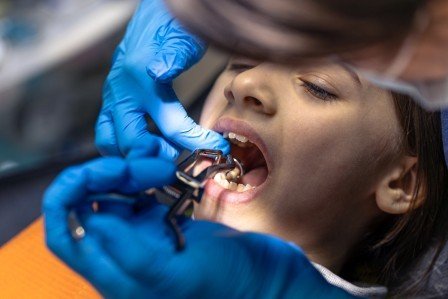How Tooth Crowns Protect and Strengthen Damaged Teeth
A healthy smile is not just about appearance—it’s a reflection of strong, functional teeth that work seamlessly every day. But what happens when a tooth becomes severely damaged, cracked, or weakened due to decay or trauma? Left untreated, it can compromise both your oral health and quality of life. Fortunately, modern dentistry offers an effective solution: tooth crowns.
Tooth crowns, also known as dental crowns, are custom-made caps designed to fit over damaged or weakened teeth. These restorations help restore shape, strength, and appearance, allowing the tooth to function normally again. In this blog, we’ll explore how dental crowns protect and strengthen damaged teeth, prevent further issues, and help preserve your natural smile for years to come.


Understanding What a Tooth Crown Is
A dental crown is a protective covering that encapsulates the entire visible portion of a tooth, right down to the gumline. Crowns are typically recommended when a tooth has suffered significant structural loss and cannot be repaired with a simple filling.
They can be made from various materials, including:
- Porcelain or ceramic – Ideal for front teeth, these offer a natural, tooth-colored appearance.
- Metal alloys – Known for strength and durability, especially for molars.
- Porcelain-fused-to-metal (PFM) – A blend of durability and aesthetics.
- Zirconia – A modern option that combines strength with lifelike appearance.
Regardless of material, the crown’s primary job is to restore strength, function, and form to a compromised tooth.
Why Teeth Become Weakened or Damaged
Teeth are remarkably strong, but they’re not invincible. Several factors can weaken a tooth over time, including:
- Extensive decay or cavities
- Cracks or fractures due to trauma or biting hard objects
- Large or failing fillings
- Worn-down enamel from grinding (bruxism)
- Root canal treatment, which can leave the tooth brittle
When a tooth is compromised, it becomes more prone to further damage or infection. A crown helps reinforce the tooth’s structure, ensuring it remains functional and protected.
How Crowns Protect Damaged Teeth
1. Encasing and Sealing the Tooth
One of the most vital roles of a crown is to completely encase the tooth, shielding it from external forces. This protective cap prevents bacteria from entering vulnerable areas, particularly in cases of cracked teeth or those with large fillings. By sealing off the tooth, a crown:
- Reduces the risk of future decay
- Prevents the spread of infection
- Guards against sensitivity to hot or cold stimuli
This is especially important after root canal therapy, where the inner pulp of the tooth has been removed, and the structure needs reinforcement.
2. Restoring Structural Integrity
When a tooth is fractured or severely worn, its ability to withstand pressure from chewing is diminished. Dental crowns redistribute the forces of biting and chewing evenly across the tooth, strengthening it and preventing further cracking or breaking.
This restoration of structure allows patients to chew normally without fear of causing additional damage.
3. Preventing Tooth Loss
Teeth that are left untreated after significant damage are at a much higher risk of becoming non-restorable or needing extraction. A dental crown can help preserve the natural tooth, which is always preferable to removal. Natural teeth help maintain jawbone structure, proper alignment, and bite balance, making preservation critical for long-term oral health.
4. Protecting Teeth with Large Fillings
When a tooth has a very large filling, especially one that involves multiple surfaces, the remaining natural tooth structure is often too weak to support itself. Crowns provide a stable “armor” that surrounds the tooth, preventing fractures that can occur from regular biting pressure.
5. Reinforcing Root Canal-Treated Teeth
Teeth that have undergone root canal treatment often become brittle over time due to the loss of pulp and hydration. Without a crown, these teeth are much more prone to cracking or breaking. A crown replaces the strength lost during the root canal procedure, allowing the tooth to function normally again.
Cosmetic and Functional Restoration
Although strength and protection are the primary goals, crowns also offer aesthetic advantages—especially when placed on front teeth. Crowns can improve the appearance of:
- Severely discolored or stained teeth
- Misshapen teeth
- Teeth with visible cracks or old fillings
Modern materials like porcelain and zirconia are designed to mimic the natural translucency of enamel, making them virtually indistinguishable from your real teeth. This means you don’t have to choose between strength and beauty—you get both.
Types of Situations That May Require a Crown
You may be a good candidate for a dental crown if you are dealing with any of the following issues:
- A tooth with a large cavity that cannot be filled
- A fractured or chipped tooth
- Teeth affected by grinding or enamel erosion
- Teeth that are misshapen or discolored
- Restoration following root canal therapy
- Support for dental bridges
- Coverage for dental implants
Consulting a dentist will help determine whether a crown is the best solution for your condition.
Types of Situations That May Require a Crown
The procedure typically takes place over two visits:
First Visit:
- The tooth is examined and prepared.
- A portion of the tooth is filed down to accommodate the crown.
- An impression is taken to create a custom-fitted crown.
- A temporary crown is placed to protect the tooth.
Second Visit:
- The temporary crown is removed.
- The permanent crown is cemented into place after proper fit and color are confirmed.
With advances in dental technology, same-day crowns are also becoming more common in certain practices, using CAD/CAM (computer-aided design and manufacturing).
Long-Term Benefits of Dental Crowns
Dental crowns offer several advantages that make them an excellent long-term investment in oral health:
1. Durability
Most crowns, especially those made of metal or zirconia, can last 10–15 years or longer with proper care.
2. Preservation of Tooth Structure
Crowns help keep your natural tooth in place, avoiding the complications associated with missing teeth, such as shifting and bone loss.
3. Improved Bite Function
Crowns restore full chewing ability, allowing you to eat comfortably and enjoy a wider variety of foods.
4. Enhanced Confidence
With improved appearance and strength, patients often feel more confident in their smiles and overall oral function.
Caring for Your Dental Crown
To ensure the longevity of your dental crown, follow these basic care tips:
- Brush and floss daily to prevent decay around the crown margins.
- Avoid chewing on ice or hard objects that can crack the crown.
- Visit your dentist regularly for cleanings and check-ups.
- If you grind your teeth, consider wearing a night guard to protect the crown.
Proper maintenance ensures your crown stays functional and aesthetically pleasing for many years.
Final Thoughts
Tooth crowns play a crucial role in restorative dentistry by protecting, reinforcing, and beautifying damaged teeth. Whether your tooth has been weakened by decay, trauma, or dental procedures, a crown offers a strong and reliable solution that restores both form and function.
Unlike fillings or temporary fixes, crowns provide a long-term defense against future damage, reduce the risk of tooth loss, and help maintain overall oral health. With advancements in materials and technology, today’s dental crowns are more natural-looking, durable, and accessible than ever.

